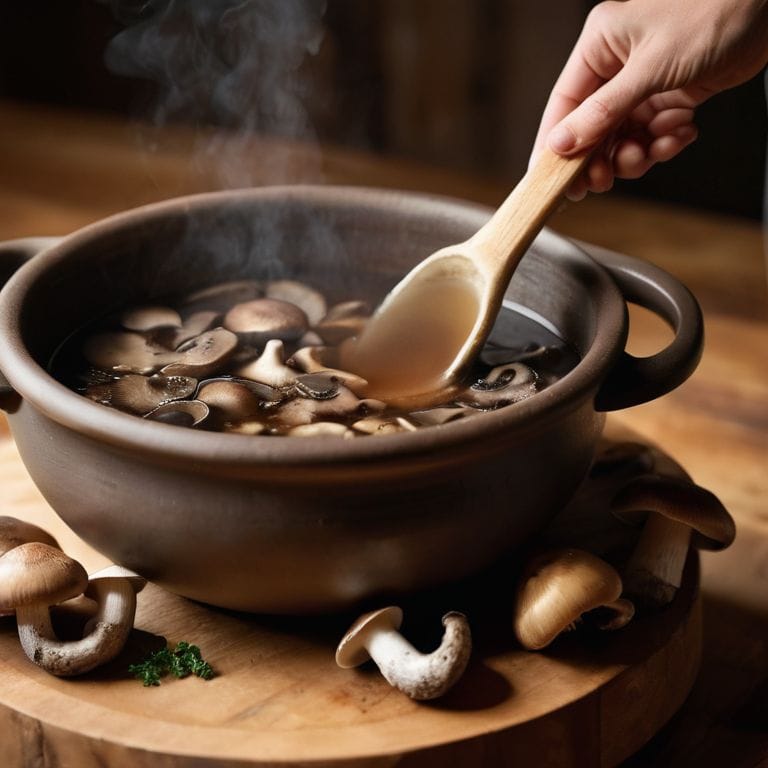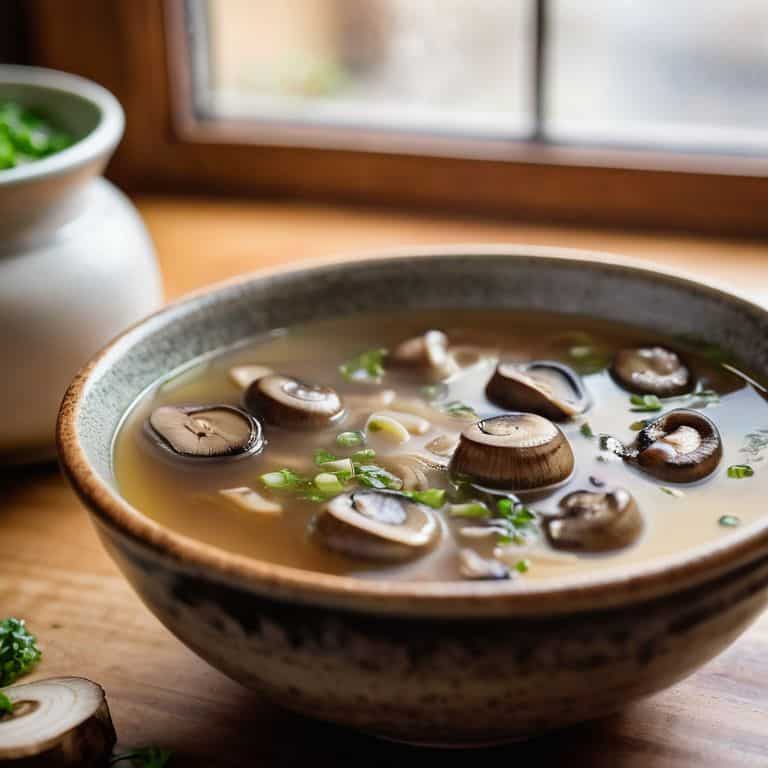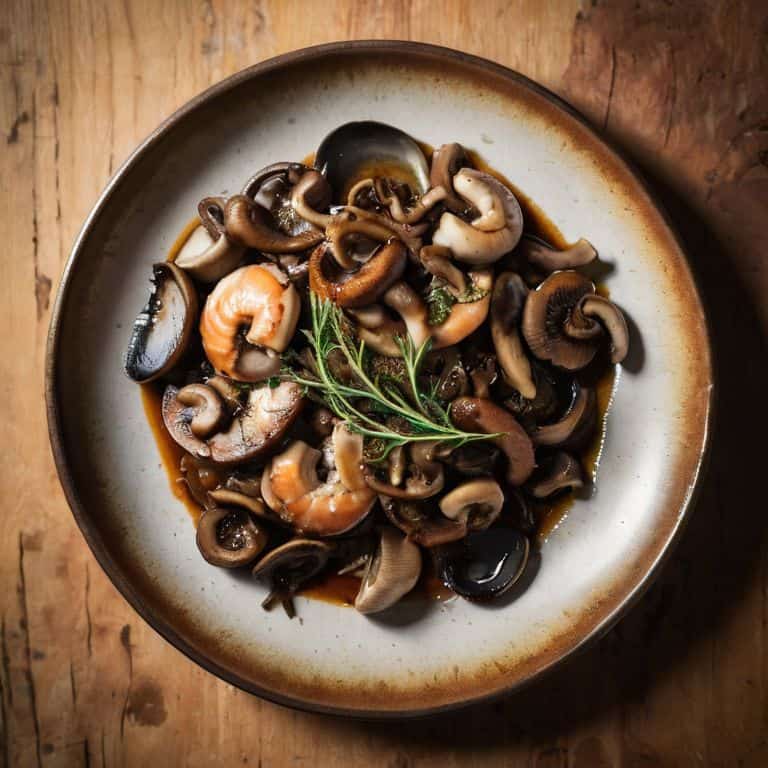As I sit here, reflecting on my experiences as a flight instructor and an avid cook, I’m reminded of the countless times I’ve heard people struggle to grasp the concept of what is umami and how to add it to your cooking. It’s a topic that’s often shrouded in mystery, with many believing it requires exotic ingredients or complicated techniques. But I’m here to tell you that’s just not the case. In fact, I’ve found that understanding umami is much like navigating through turbulent weather – it requires a solid foundation in the basics and a willingness to simplify the complexities.
In this article, I promise to cut through the hype and provide you with practical, experience-based advice on how to unlock the secrets of umami and elevate your cooking to new heights. I’ll share with you my own journey of discovery, from the smoky flavors of a bush pilot’s campfire to the rich aromas of a perfectly balanced dish. My goal is to empower you with the knowledge and confidence to experiment with umami in your own kitchen, without feeling overwhelmed by fancy terminology or expensive ingredients. So, buckle up and let’s take off on this culinary adventure together, as we explore the wonderful world of what is umami and how to add it to your cooking.
Table of Contents
- Understanding Umami
- What Is Umami and How to Add It to Your Cooking
- Enhancing Umami in Vegetarian Dishes With Mushroom Broth
- Soy Sauce Substitution for Deep Umami Flavor
- Taking Umami to New Heights: 5 Key Tips to Elevate Your Cooking
- Key Takeaways for Unlocking Umami
- Navigating the Skies of Flavor
- Taking Your Cooking to New Heights with Umami
- Frequently Asked Questions
Understanding Umami

To truly grasp the concept of umami, let’s dive into the science of flavor pairing. Umami is often referred to as the fifth taste, in addition to sweet, sour, bitter, and salty. It’s a Japanese word that roughly translates to “pleasant savory taste”. This unique flavor profile is typically associated with foods that contain high levels of glutamates, such as meats, vegetables, and umami rich ingredients like mushrooms and soy sauce.
When cooking with umami-rich ingredients, it’s essential to understand how to balance their flavors. For instance, using mushroom broth as a base for soups or stews can add a depth of flavor that’s hard to replicate with other ingredients. Similarly, soy sauce substitution in recipes can be a great way to introduce umami flavors into your dishes. By experimenting with different combinations of ingredients, you can create complex and harmonious flavor profiles that will elevate your cooking to the next level.
As we explore the world of umami, it’s fascinating to see how different cuisines incorporate this flavor into their dishes. From the savory flavors of Japanese miso soup to the rich flavors of Italian tomato sauce, umami plays a crucial role in enhancing umami in vegetarian dishes. By understanding the fundamentals of umami and how to apply it in various cooking contexts, you’ll be well on your way to creating delicious and balanced meals that will leave your taste buds soaring.
The Science of Umami Flavor Pairing
When it comes to combining ingredients, harmony is key. Just like flying an aircraft, where every control input has a specific effect, umami flavor pairing relies on understanding how different components interact.
The art of pairing is rooted in the chemistry of taste, where certain compounds enhance or suppress each other, creating a balanced flavor profile.
Unlocking Umami Rich Ingredients
To unlock the full potential of umami in your cooking, it’s essential to understand the types of ingredients that are naturally rich in this flavor component. Umami-rich foods such as mushrooms, especially porcini and shiitake, are perfect examples of how to add depth to your dishes.
When it comes to elevating flavors, ingredients like soy sauce, fish sauce, and miso paste are staples in many cuisines, providing a concentrated dose of umami that can enhance the overall taste experience of your recipes.
What Is Umami and How to Add It to Your Cooking

To take your dishes to the next level, let’s dive into umami rich ingredients. These are the game-changers that add depth and complexity to your cooking. Consider using mushroom broth as a substitute for traditional broth in your recipes – it’s a simple way to introduce an _umami flavor_ that will elevate your dishes.
When it comes to cooking with mushroom broth, the key is to use it sparingly, as it can quickly overpower other flavors. Start by substituting a small portion of your traditional broth with mushroom broth and adjust to taste. You can also experiment with _soy sauce substitution in recipes_ to add a salty, umami flavor.
In various cuisines, umami flavor is achieved through different ingredients and techniques. For instance, in Japanese cuisine, dashi – a broth made from seaweed and dried fish – is used to create a rich, umami flavor. In vegetarian dishes, _enhancing umami_ can be achieved by using ingredients like miso paste or soy sauce. By understanding the science of flavor pairing, you can create harmonious and delicious dishes that showcase the beauty of umami.
Enhancing Umami in Vegetarian Dishes With Mushroom Broth
To elevate vegetarian dishes, I recommend using mushroom broth as a foundation. This simple ingredient can add a depth of flavor that’s hard to replicate with other ingredients. By incorporating mushroom broth into your recipes, you can create a rich and savory taste experience that will leave your guests wanting more.
When working with mushroom broth, it’s essential to balance the flavors. You want to enhance the umami taste without overpowering the other ingredients in your dish. Start by using small amounts of broth and adjusting to taste, allowing the flavors to meld together in harmony.
Soy Sauce Substitution for Deep Umami Flavor
When it comes to adding a deep umami flavor to your dishes, soy sauce can be a powerful tool. It’s a common ingredient in many cuisines, particularly in Asian cooking, and can add a rich, savory flavor to a wide range of dishes. By using soy sauce as a substitution for other seasonings, you can create a deeper, more complex flavor profile that elevates your cooking to the next level.
To get the most out of soy sauce, it’s essential to understand how to balance its saltiness with other ingredients. This means being mindful of the amount used and pairing it with ingredients that complement its flavor, such as ginger or garlic, to create a harmonious balance of flavors.
Taking Umami to New Heights: 5 Key Tips to Elevate Your Cooking
- Start with the basics: understand that umami is often referred to as the fifth taste, in addition to sweet, sour, bitter, and salty, and it’s all about depth and richness
- Experiment with umami-rich ingredients like mushrooms, especially porcini and shiitake, seaweed, soy sauce, and fish sauce to add layers of flavor to your dishes
- Balance is key: when combining umami flavors, think about the concept of ‘flavor vectors’ – just as an aircraft needs balanced forces to fly smoothly, your dish needs balanced flavors to soar
- Don’t be afraid to get creative with umami flavor pairing – just as a good pilot always checks the weather forecast, a good chef checks the flavor forecast and adjusts accordingly
- Remember, umami is a journey, not a destination: it’s about enhancing and deepening the flavors in your cooking, so don’t be discouraged if it takes time and practice to get it just right – just like learning to navigate through turbulent skies
Key Takeaways for Unlocking Umami
Understanding and identifying umami-rich ingredients is crucial for enhancing the depth of flavor in various dishes, from meats to vegetarian options
Umami flavor pairing is a science that can be mastered by combining ingredients that complement each other’s unique taste profiles, leading to harmonious and complex flavors
By applying simple techniques such as using mushroom broth or soy sauce substitution, home cooks and professional chefs alike can significantly boost the umami flavor in their recipes, elevating their cooking to new heights
Navigating the Skies of Flavor
Just as a steady wing provides lift, umami provides depth – and mastering its addition to your dishes is akin to plotting a perfect flight plan, where every ingredient works in harmony to elevate your culinary journey.
Daniel Sato
Taking Your Cooking to New Heights with Umami

As we’ve explored the world of umami together, you’ve learned how to unlock the fifth flavor and elevate your dishes from ordinary to extraordinary. From understanding the science behind umami flavor pairing to enhancing vegetarian dishes with mushroom broth and using soy sauce for deep umami flavor, you now have a solid foundation to experiment and find your own favorite ways to add umami to your cooking. Remember, the key to mastering umami is to start simple and be patient, allowing the flavors to meld together in harmony.
As you continue on your culinary journey, I encourage you to keep exploring and discovering new ways to incorporate umami into your recipes. Don’t be afraid to try new ingredients and flavor combinations – it’s often the unexpected pairings that lead to the most deliciously surprising results. With umami on your side, the possibilities are endless, and I have no doubt that you’ll be creating dishes that will leave your friends and family in awe. Happy cooking, and remember to always keep your taste buds soaring!
Frequently Asked Questions
How can I balance umami flavor with other tastes in a dish without overpowering it?
To balance umami, think of it like adjusting your aircraft’s trim – you want to find that sweet spot where all flavors are in harmony. Start by adding a small amount of umami-rich ingredients, then taste and adjust, just as you would fine-tune your flight controls, making incremental changes until you reach the perfect balance.
What are some common mistakes to avoid when adding umami-rich ingredients to recipes?
When adding umami-rich ingredients, beware of over-seasoning – it’s like navigating through turbulence, you want to make adjustments smoothly. Start with small amounts and taste as you go, just as you would monitor your aircraft’s instruments during flight. This approach will help you avoid overpowering the other flavors and ensure a balanced taste.
Can umami flavor be developed or enhanced in foods through cooking techniques, such as roasting or grilling?
Absolutely, umami can be coaxed out through cooking techniques. Think of it like flying an approach – you need the right conditions. Roasting, grilling, or even searing can enhance umami by caramelizing natural sugars and intensifying flavors, much like how a well-executed landing requires patience and practice.
